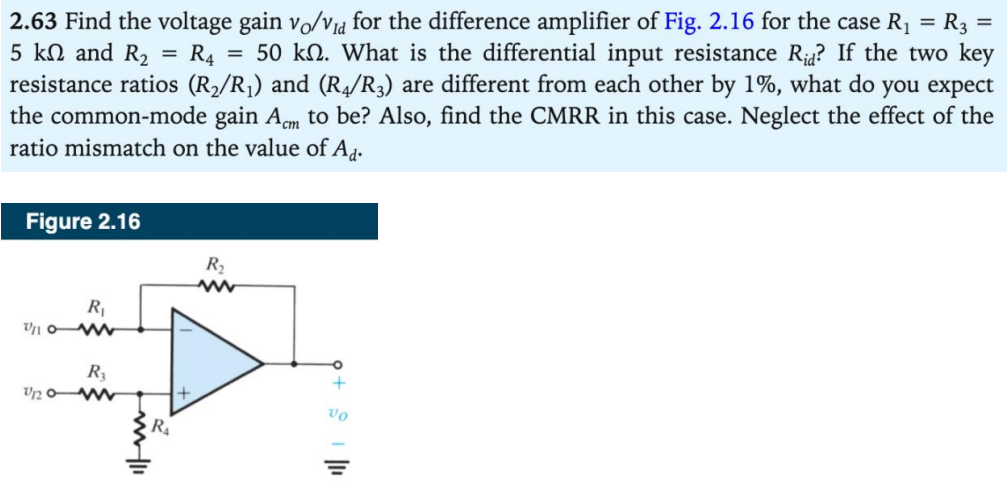2.63 Find the voltage gain vO/vId for the difference amplifier of Fig. 2.16 for the case R1 = R3 = 5 kΩ and R2 = R4 = 50 kΩ. What is the differential input resistance Rid? If the two key resistance ratios (R2/R1) and (R4/R3) are different from each other by 1%, what do you expect the common-mode gain Acm to be? Also, find the CMRR in this case. Neglect the effect of the ratio mismatch on the value of Ad. Figure 2.16
